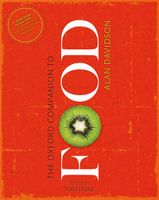Advertisement
Rillette
Published 2014
The term is derived from the word rille, a dialect form of the Old French reille, meaning lath, plank, rung, etc., and applied since the 15th century to (presumably long and flat) pieces of pork. The variant rillette appeared in early times. The rillettes of Tours and subsequently of Le Mans have been famous, and the term has become part of the English culinary vocabulary.
Rillettes, as sold in a charcuterie, do not look at all like flat ‘planks’ of meat. They have undergone a series of processes, an initial cooking, the addition of some bones and seasoning, further cooking followed by removal of the bones and fat and then, with the fat being gradually restored, the teasing apart of the strands of the meat, producing the characteristic moist grey fibrous appearance of the final product.


